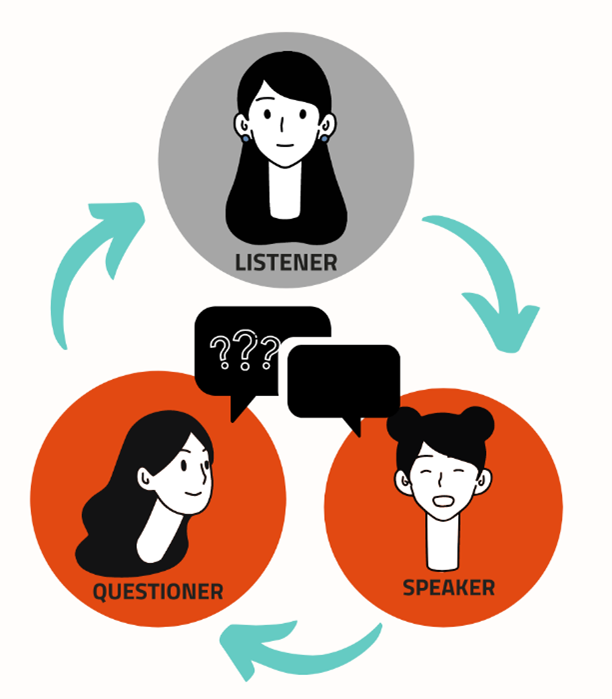Information

Ask parents to brainstorm common practical issues that children may face when starting a new school. Write these issues on a whiteboard or flipchart.
Searching for a solution – 3 ways of listening
When you have a huge discussion in a group, it is time to move to a personal level to search for a solution. Give a few minutes for participant to consider 1-3 ideas which might help improve or solve the problematic situation. When participants had written down their solutions, split the group in teams of 3 members.

Present them 3 roles as 3 ways of listening which they will need to use by rotation:
- First role. The SPEAKER. The SPEAKER's role is to share his ideas and answer the questions of QUESTIONER. Speaker will have 10 minutes to share his ideas and search for the solution.
- Second role. The QUESTIONER. Questioner role is to help the speaker to dive deeper searching for solutions by asking open questions. It is really important that the Questioner would not be sharing his opinion. His role is to help express SPEAKER’s point of you about the solution he sees. As well, it is really important that the questions are OPEN, avoid questions with yes / no answers. The questioner role stays for 10 minutes while speaker is sharing.
- Third role. The LISTENER. Listener’s role is to observe the deeper meanings: spectate the conversation between the Questioner and the Speaker. Listener’s goal is to notice what was unsaid by reading body languages, identifying specific words used in the sharing process. After 10 minutes LISTENER gets 3 minutes to share what he had notice in conversation. At this point the Speaker and the Questioner only need to listen without interruption and accept what was reflected. It is not the time for further discussion.
After the first round (13 minutes) it's time to move in a circle and change the roles. Participants are recommended to move physically and change their sitting positions. For example, listener moves to speaker seat, speaker moves to questioner seat and questioner moves to listener seat. When everyone has changed their positions, it is time to begin the process again. Repeat it one more time, so everyone would have a chance to participate in different roles. At the end ask in teams of 3 to reflect their experience. You might suggest to discuss in these questions:
- Which one role was most convenient for me? And which one was the hardest? Why?
- What kind of similarities have I found? What was common in our group?
- What kind of solution could we find as a group? What would be the key point?
After the reflection ask participants to share in a big group the third question result – what kind of solutions have they found as a group? What kind of agreements have they reached?
This method allows participants to gain understanding, that communication is not only about speaking, but much more about active listening without having personal bias.
Further reading:
The valuable information about the essence of active listening: https://positivepsychology.com/active-listening/
Extra tips for practicing active listening: https://www.mindtools.com/CommSkll/ActiveListening.htm